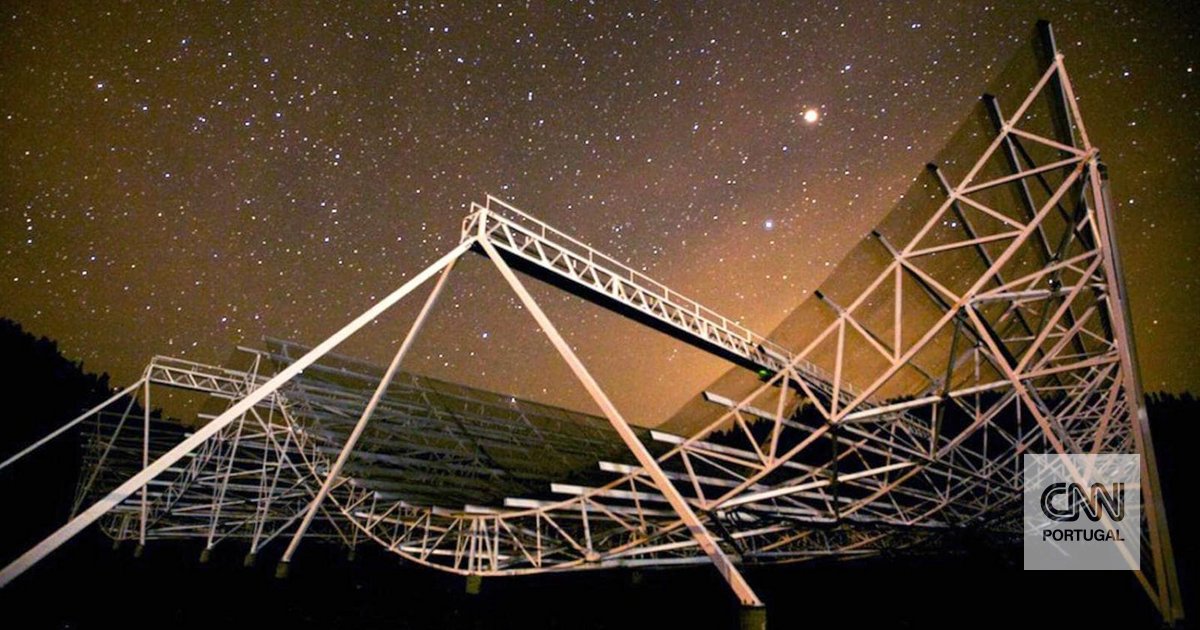A mysterious radio burst with a heartbeat-like character has been discovered in space.
Astronomers estimate that the signal came from a galaxy about a billion light-years away, but the exact location and cause of the outburst remain unknown. The study, detailing the results, was published on Wednesday at nature magazine.
Fast radio bursts, or FRBs (Fast Radio Bursts), are intense bursts of radio waves lasting only milliseconds, the origin of which is unknown. The first FRB was discovered in 2007, and since then, hundreds of such fast cosmic flares have been detected, coming from many distant points throughout the universe.
Many FRBs emit very bright radio waves that last no more than a few milliseconds before disappearing completely, and about 10% of these are known to be repetitive and patterned.
Fast radio bursts are so fast and unexpected that they are difficult to observe.
One of the resources used to detect them is a radio telescope called the Canadian Hydrogen Intensity Mapping Experiment (CHIME) at the Dominion Radio Astrophysical Observatory in British Columbia, Canada.
This radio telescope, which has been in operation since 2018, constantly monitors the sky and, in addition to fast radio bursts, is sensitive to radio waves emitted by distant hydrogen in the universe.
On December 21, 2019, astronomers using CHIME noticed something that immediately caught their attention: a fast burst of radio signal that was “in many ways unusual,” according to Daniele Michilli, a PhD researcher at the Kavli Institute of the Institute of Astrophysics and Space Science . at the Massachusetts Institute of Technology.
The signal, named FRB 20191221A, lasted up to three seconds, about 1,000 times longer than typical fast radio bursts.
Michilli was monitoring data coming from CHIME when the explosion occurred. This was the longest running FRB found to date.
“It was unusual,” Michilli said. “Not only was it very long, about three seconds, but also intermittent bursts that were amazingly accurate, emitting every fraction of a second — boom, boom, boom — like a heartbeat. This was the first time that the signal itself was periodic.”
Although FRB 20191221A has yet to repeat, “the signal is formed by a sequence of successive peaks that we found to be separated by about 0.2 seconds,” Michilli said in an email.
unknown origin
The research team doesn’t know the exact galaxy the burst came from, Michilli said, and even the estimated distance of 1 billion light-years is “very uncertain.” While CHIME is ready to look for bursts of radio waves, it is not as good at finding their points of origin.
However, CHIME is being developed as part of a project in which additional telescopes currently under construction will conduct joint observations and be able to triangulate radio bursts to specific galaxies, Michilli said.
But the signal contains clues about where it came from and what might have caused it.
“CHIME has already discovered many FRBs with different properties,” Michilli added. “We have observed how some of them live in very turbulent clouds, while others seem to live in a clean environment. Judging by the properties of this new signal, we can say that there is a plasma cloud around this source, which should be extremely turbulent.”
When the researchers analyzed FRB 20191221A, the signal was similar to the ejecta emitted by two different types of neutron stars, or the dense aftermath of a giant star’s death, called radio pulsars and magnetars.
Magnetars are neutron stars with incredibly powerful magnetic fields, while radio pulsars emit radio waves that pulsate as the neutron star rotates. Both stellar objects create a signal similar to the flickering beam of a beacon.
The fast radio burst appears to be more than a million times brighter than these emissions. “We think this new signal could be a magnetar or a pulsar on steroids,” Michilli said.
The research team will continue to use CHIME to monitor the sky for new signals from this radio burst, as well as others with a similar periodic signal. The frequency of radio waves and how they change could help astronomers learn more about the rate at which the universe is expanding.
“This discovery raises the question of what could have caused this extreme signal, which we have never seen before, and how we can use this signal to study the universe,” Michilli said. “Telescopes of the future promise to detect thousands of FRBs per month, and by then we may be able to detect many more of these periodic signals.”









 Every day we bring you dozens of news from the world of Android in Portuguese. Follow us on Google News. Click here and then on “Subscribe”. Thank you!
Every day we bring you dozens of news from the world of Android in Portuguese. Follow us on Google News. Click here and then on “Subscribe”. Thank you!







